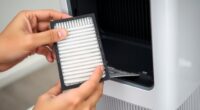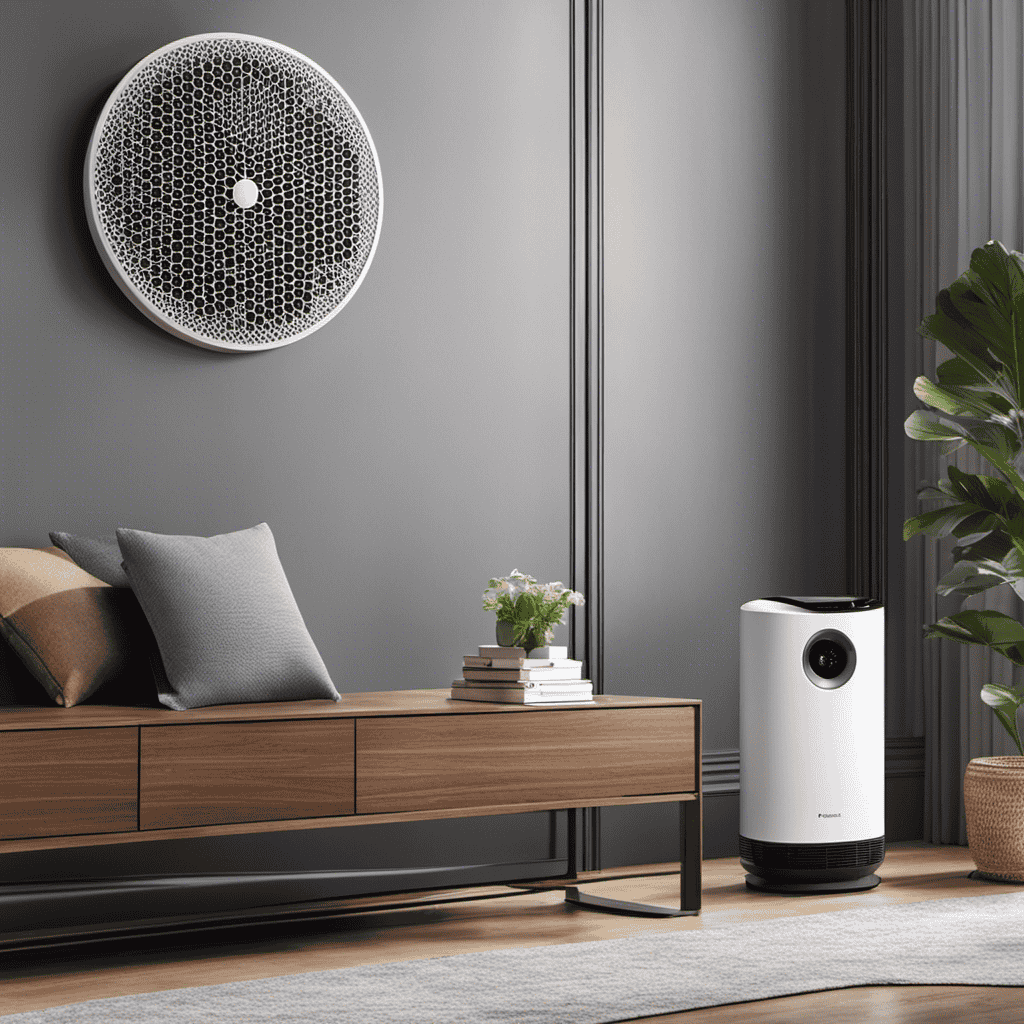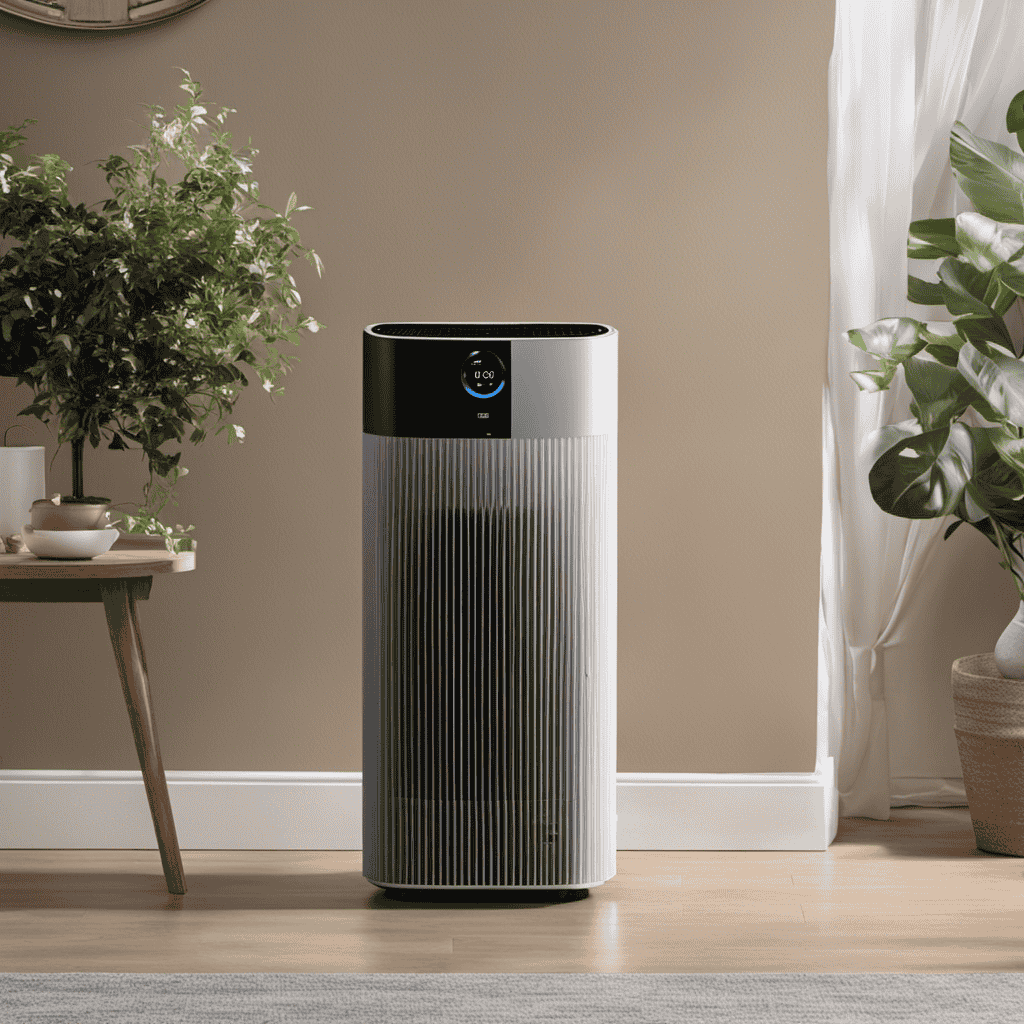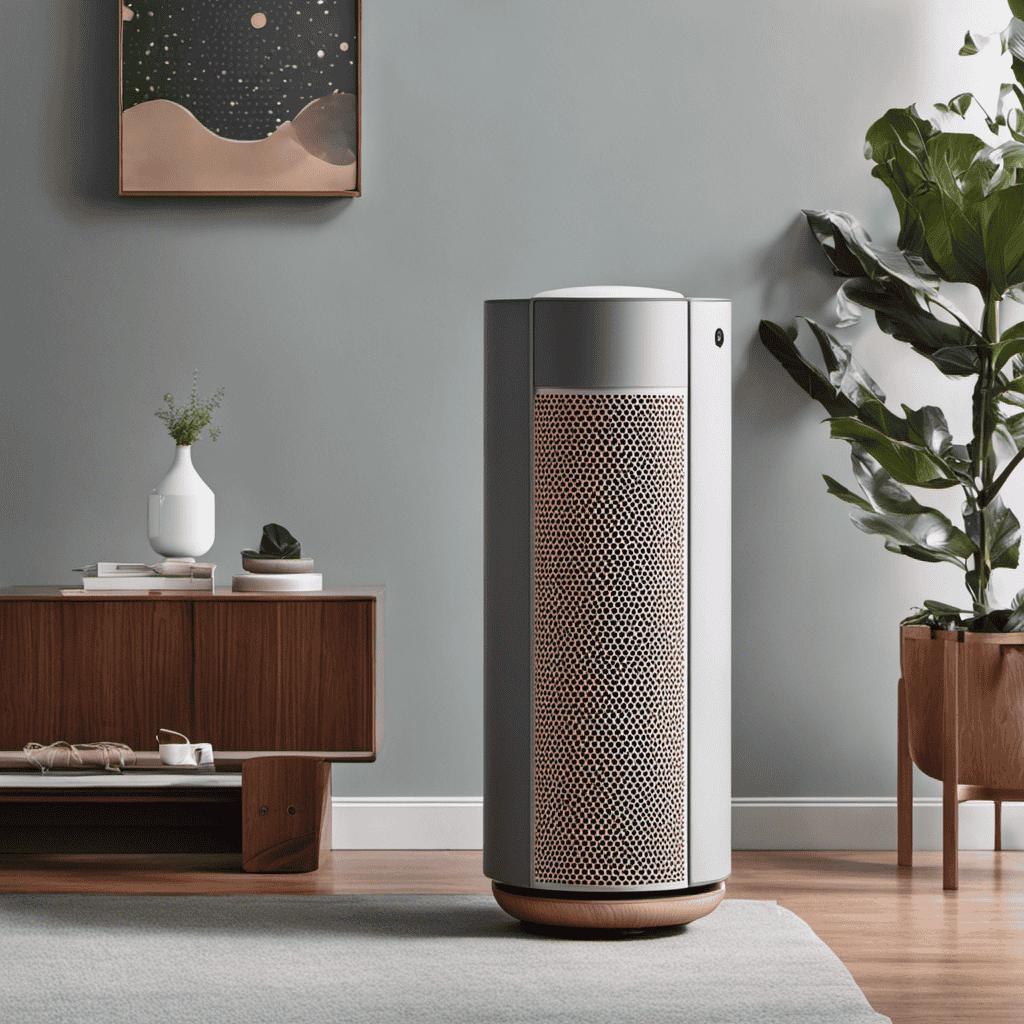If you live near wildfires, create a clean-air safe room by selecting a small, easily sealed space, ideally with few ventilation openings. Seal all windows and doors tightly using weather stripping or sealant, then add high-quality HEPA and activated carbon filters to your air purifier. Keep it running continuously and ensure everyone knows how to quickly close and secure the room. Want to learn more about setting up an effective wildfire safe space? Keep going for detailed steps.
Key Takeaways
- Choose a room that is easy to seal off and has minimal ventilation openings for effective smoke protection.
- Install high-quality HEPA air purifiers with activated carbon filters inside the safe room and maintain them regularly.
- Seal all windows, doors, and gaps with weather stripping or sealant to prevent smoke infiltration during wildfire threats.
- Stock emergency supplies like masks, bottled water, non-perishable food, flashlight, and radio inside the safe room.
- Practice sealing the room and activating air purifiers to ensure readiness during wildfire events.
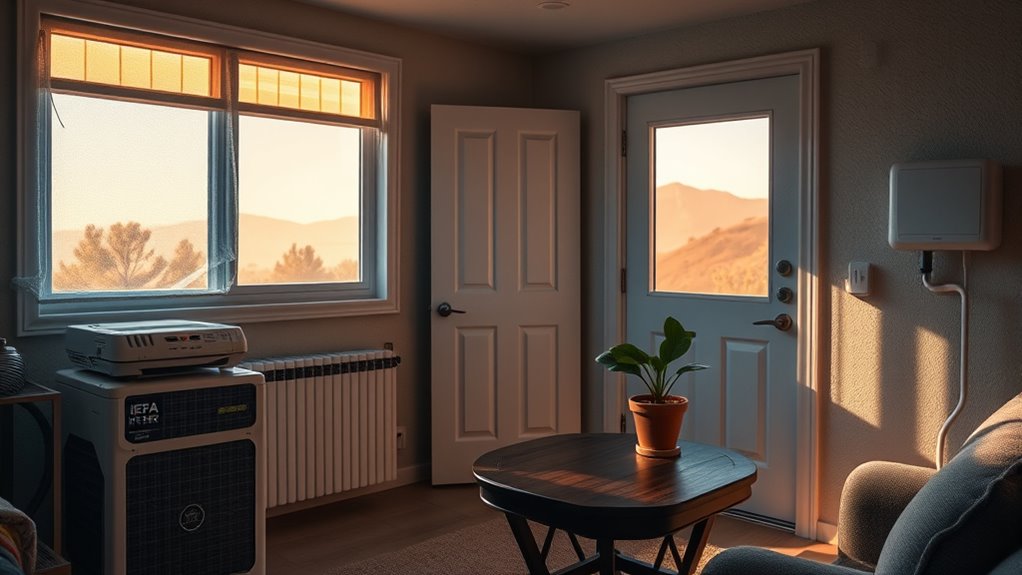
When wildfires threaten your home, having a designated safe room can make all the difference. This space isn’t just about physical safety; it’s about protecting your health from dangerous smoke, ash, and airborne pollutants that can infiltrate your living areas. To truly create a safe haven, you need to focus on effective air filtration and emergency preparedness. Your safe room should be equipped to keep out harmful particles and provide you with a sense of security during wildfire events.
Start by selecting a room that’s easy to seal off from the rest of your house. Close all windows and doors tightly, and consider adding weather stripping or sealant around door frames to prevent smoke from seeping in. Air filtration becomes essential here. Invest in a high-quality HEPA air purifier designed for wildfire smoke. These purifiers can capture tiny particles, including ash and soot, which standard filters might miss. Place the purifier in the safe room and keep it running continuously during a wildfire threat. Make sure to regularly change or clean the filters to maintain peak performance.
Choose a sealed room and use a HEPA air purifier to protect against wildfire smoke.
In addition to air filtration devices, consider adding activated carbon filters to your safe room. These filters can absorb volatile organic compounds (VOCs) and odors produced by wildfire smoke, further improving indoor air quality. Proper ventilation is key, but only when it’s safe. During a wildfire, it’s best to keep the safe room sealed and rely on your purifier’s filtration system rather than opening windows or vents that could bring in smoke.
Ensuring your air purifier has sufficient room coverage size is vital for effective protection in your safe room. Emergency preparedness isn’t just about having supplies; it’s about knowing how to respond swiftly and effectively. Keep an emergency kit inside your safe room, including masks rated for wildfire smoke, bottled water, non-perishable food, a flashlight, and a battery-powered radio. Establish a communication plan with family members so everyone knows how to reach each other and where to gather in case of evacuation. Practice sealing off the safe room and turning on the air purifier so that everyone is familiar with the process when a wildfire is imminent.
Frequently Asked Questions
How Often Should I Replace Air Filters in My Safe Room?
You should replace your air filter regularly to guarantee ideal filter maintenance. Typically, the air filter lifespan ranges from 30 to 90 days, depending on usage and air quality. Check your filter monthly and replace it when it appears dirty or clogged. Proper filter maintenance helps keep the air inside your safe room clean and safe, especially during wildfire smoke events. Staying on top of this task keeps your air quality at its best.
Can Houseplants Improve Indoor Air Quality During Wildfires?
Think of houseplants as tiny green warriors battling indoor pollution. Their plant benefits include filtering out toxins, freshening the air, and adding a calming touch. During wildfires, they can help improve indoor air quality by absorbing some pollutants, but they’re not a complete fix. Keep windows sealed and use HEPA filters for better protection. Plants enhance your space, but don’t rely on them alone to clear the air.
What Is the Best Type of Air Purifier for Wildfire Smoke?
For wildfire smoke, the best air purifier combines HEPA filtration and activated carbon. HEPA filters capture tiny smoke particles, while activated carbon absorbs odors and harmful gases. You should choose a purifier with a high CADR rating for smoke and guarantee it has both features. Using this type of purifier keeps your indoor air cleaner, reducing smoke inhalation and protecting your health during wildfire events.
How Do I Seal My Safe Room Effectively Against Smoke Leaks?
To effectively seal your safe room against smoke leaks, focus on ventilation strategies and sealing materials. Use weatherstripping around doors and windows to block gaps, and add door sweeps to prevent smoke from seeping underneath. Seal any cracks in walls or vents with caulk or foam sealant. Keep windows closed and consider installing an airtight vent cover. Proper sealing minimizes smoke infiltration, ensuring your safe room stays clean and safe during wildfire events.
Are There Portable Air Quality Monitors Suitable for Home Use?
You can find portable monitors that are perfect for home use, helping you keep track of air quality in real-time. These devices provide instant air quality alerts, so you know when pollution levels rise or fall. Look for models with reliable sensors for smoke, VOCs, and particulate matter. Portable monitors are easy to move around, ensuring you stay informed and safe, especially during wildfire season or in areas prone to poor air quality.
Conclusion
Creating a clean-air safe room is essential if you live near wildfires. Remember, a recent study found that indoor air quality can be up to 10 times better than outside during a wildfire. By sealing vents, using HEPA filters, and keeping windows closed, you can protect yourself and your loved ones from harmful smoke. Don’t wait until fire season to prepare—your safety depends on it. Stay proactive and keep your air clean.

